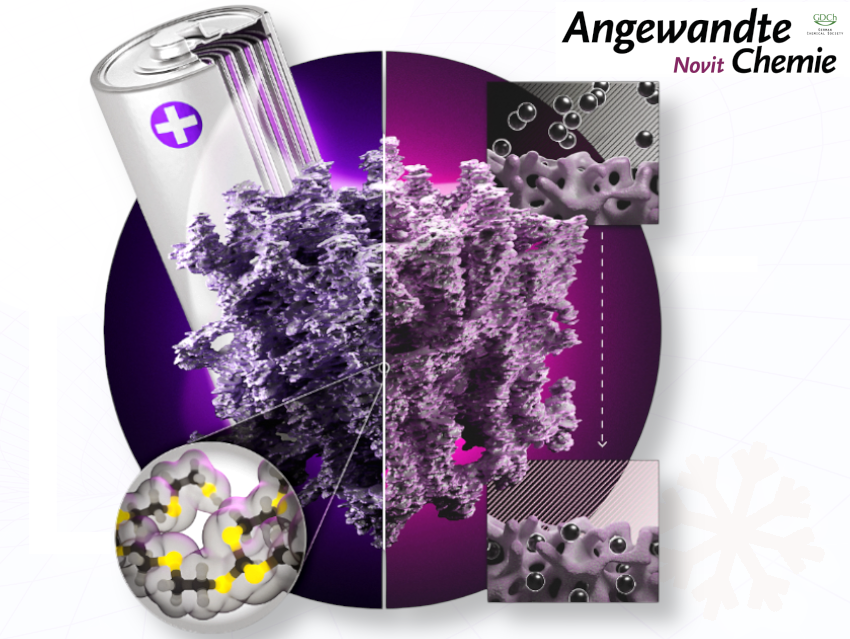Max von Delius and Kerstin Leopold, Ulm University, Germany, and their coauthors have developed sulfur-rich network polymers (44–66 wt% S) using dynamic covalent thioorthoester chemistry and cost-effective polycondensation. Their porous, solvent-insoluble materials show excellent metal sorption and battery cathode performance, marking a significant advance in functional sulfur-based polymers.

The Scientific Advisory Committee of Angewandte Chemie Novit recognized this emergence of a new group of sulfur-rich polymers as a significant breakthrough for applications in precious-metal recovery and battery technology.
What did you do?
We discovered a new sulfur-rich polymer material that could aptly be described as a ‘sponge for metal ions’.
Why are you interested in this?
At the beginning of the project, we set out to develop an unprecedented material composed primarily of carbon and sulfur atoms. The goal was to incorporate as many sulfur atoms as possible, but without forming oligo-sulfur chains, as these can easily detach and cause issues in the two intended applications: metal ion adsorption and battery cathodes.
Additionally, the material needed to be cost-effective and cross-linked to ensure complete insolubility.
What is new and cool about this?
 We achieved all of the above mentioned goals by using, for the first time in polymer chemistry, a molecular building block consisting of one carbon atom and three sulfur atoms (a so-called thioorthoester).
We achieved all of the above mentioned goals by using, for the first time in polymer chemistry, a molecular building block consisting of one carbon atom and three sulfur atoms (a so-called thioorthoester).
We had previously identified relatively mild reaction conditions for the underlying thioorthoester exchange reaction, but we did not expect this result to translate so well into polymer chemistry.
We also did not expect the white, ‘fluffy’ material we obtained (pictured on the right) in very high yields to perform so well …
What is the main significance of your results?
The results we observed when using the material as a scavenger for ion adsorption were outstanding. In some cases, our material outperformed the key performance figures of the best commercial metal scavengers on the market (e.g., Quadrapure® TU), even without major optimization.
QuadraPure® TU is a thiourea-based polymeric metal scavenger resin designed to remove trace metals—especially precious (Pd, Pt, Rh, Ru) and base metals like Cu—from organic or aqueous streams, commonly used in pharmaceutical and fine-chemical processing.
Although we examined a wide range of metals, we consider the application potential particularly promising for palladium, a very expensive precious metal that must routinely be removed from pharmaceutical raw products, and antimony, a highly toxic metalloid that must be removed from incinerator ash under the REACH regulation.
In the battery application, the results for a purely organic cathode material were also very promising. A specific capacity of around 100 mAh per gram was maintained over 1,000 charge and discharge cycles, with the Faradaic efficiency consistently close to 100%.
What do you see as the next steps for this research?
One of the reviewers of the paper recommended to study the extraction of gold from seawater, so we may look into this in the future for obvious reasons 😉.
We would also like to perform a study on the removal of antimony from a real-world sample of ash generated in a waste incineration plant. It is promising in this respect that we have already achieved sorption/desorption cycles with lab samples.
What part of your work was the most challenging?
Probably the most challenging synthesis achievement was the difficult preparation of the dithiol HS-CH₂CH₂-S-S-CH₂CH₂-SH, which we needed in relatively large amount as a monomer for the battery application.
What does it mean to you to publish in Angewandte Chemie Novit?
It feels like a great honor to have authored the first publication that is selected for an “upgrade” into Angewandte Chemie Novit and this is emphasized by the many congratulative messages we have received since online publication.
We really like the idea of an “uphill” transfer within the publishing system, where “downhill” transfers have become the norm, and we wish the journal and its editors the best of success!
Anything else you would like to add?
It took about six years from the first idea to publication. Research that is truly novel and interdisciplinary needs time …
Thank you very much for sharing these insights.
The paper they talked about:
- Thioorthoester Polymers as Sulfur-Rich Materials in Metal Scavengers and Battery Cathodes,
Jan Kraus, Andreas Gruber, Ruth Gomes, Dominic Iannitto, Kerstin Leopold, Max von Delius,
Angewandte Chemie Novit 2025.
https://doi.org/10.1002/anov.70000
Max von Delius is Professor of Organic Chemistry at Ulm University, Germany.
Kerstin Leopold is Professor at the Institute of Analytical and Bioanalytical Chemistry at Ulm University, Germany.
Also of Interest

The German Chemical Society (GDCh) and Wiley-VCH launch Angewandte Chemie Novit, a highly-selective journal with a unique selection process to give the best research extra visibility




